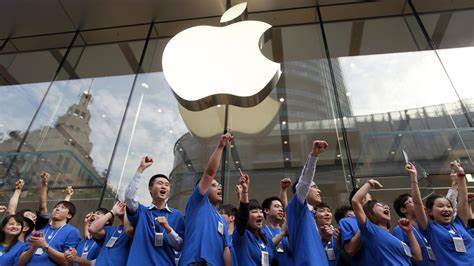
12/3/2022
Apple plans to leave China as Covid protests delay production of its products
As China’s COVID-lockdown protests spread, Apple is finally being forced to address its dependence on Beijing, said Tim Culpan in Bloomberg. Last week, fighting broke out at a massive factory complex nicknamed “iPhone City” in Zhengzhou, where footage of violent scenes showed “white-clad storm troopers in protective gear beating people, while hordes of workers fight back.”
For weeks, workers had been “confined to their dorms, starved of reliable information, denied adequate food, and fearing for their safety.” The 200,000-person industrial metropolis is owned by Taiwan’s Foxconn, but it has been making iPhones since 2007.
The unrest there is “likely to result in a production shortfall of close to 6 million iPhone Pro units this year.” The conflict might “have been avoided if Apple and its suppliers” had had “sufficient backup options.”
But China still produces roughly 95 percent of Apple’s iPhones, despite “mounting evidence that such concentration is a major political and economic risk.”
What China’s zero-COVID troubles mean for global economic growth
The “Made in China” trademark may no longer be the symbol of international trade it once was.
Influential multinational giants like Apple and Tesla (TSLA) have some of the largest manufacturing hubs in China.
Due to the social unrest, however, Apple is set to produce 6 million fewer iPhones after factory workers at the Foxconn facility in Zhengzhou protested against the handling of the outbreak and payment delays.
“This is one of the rare miscues on Apple,” Keith Fitz-Gerald, a private investor told Yahoo Finance, explaining that COVID protests in China were creating more doubt and uncertainty for investors.
However, companies like Apple could make a manufacturing comeback in Vietnam, Thailand, India, and even in the U.S. By the end of this year, Apple is expected to move 5% of its iPhone 14 production to India as Foxconn explores manufacturing opportunities there, according to JPMorgan.
China was the world’s second-largest recipient of foreign direct investment (FDI) in 2021, with nearly $179 billion pouring into the country, but China’s current investment outlook is bleak.
Although China’s markets are more open than a decade ago, the FDI market openness index for China is still below 1, as China’s government remains heavily involved in financial institutions, banking, and private firms, according to a report by the Atlantic Council.
© CopyRights RawNews1st






